History and Culture
Mingde Reservoir
Mingde Reservoir is located in Touwu Township of Miaoli County in Taiwan. It is the county’s first multi-functional reservoir that plays a key role in industrial, livelihood, irrigation and water supply. The vast water area of the reservoir surrounds the hilly area of Miaoli, with a water area as long as about 2,625 feet and a lake area as wide as about 494 acres. The area itself is also surrounded by rolling mountains.
There are three picturesque islands within the reservoir, which are Yuanyang Island, Rihsin Island, and Haitang Island, each adds to the beauty of the reservoir. Yuanyang Island is located at the southern side of the lake. This island is unique because it is the only island that is not connected to the land and can only be accessed by boat. On the other hand, Haitang Island connects the north and south shores of the lake through Suspension Bridge No. 3 and is also where Yongchun Temple is located. Rihsin Island is the largest of the three islands, which has a visitor center, landscape cafes and rich ecological resources, making it a tourist attraction with great tourism value.
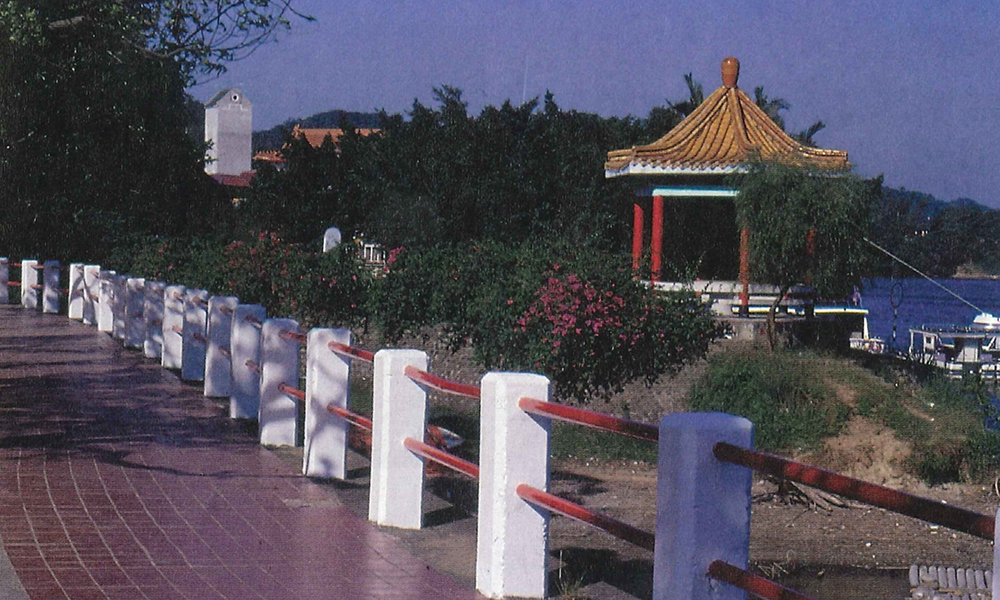
Image source: Construction of Mingde Reservoir. Filing unit: Culture and Tourism Bureau, Miaoli County. Digital object license: CC BY (attribution). Published in Taiwan Cultural Memory Bank
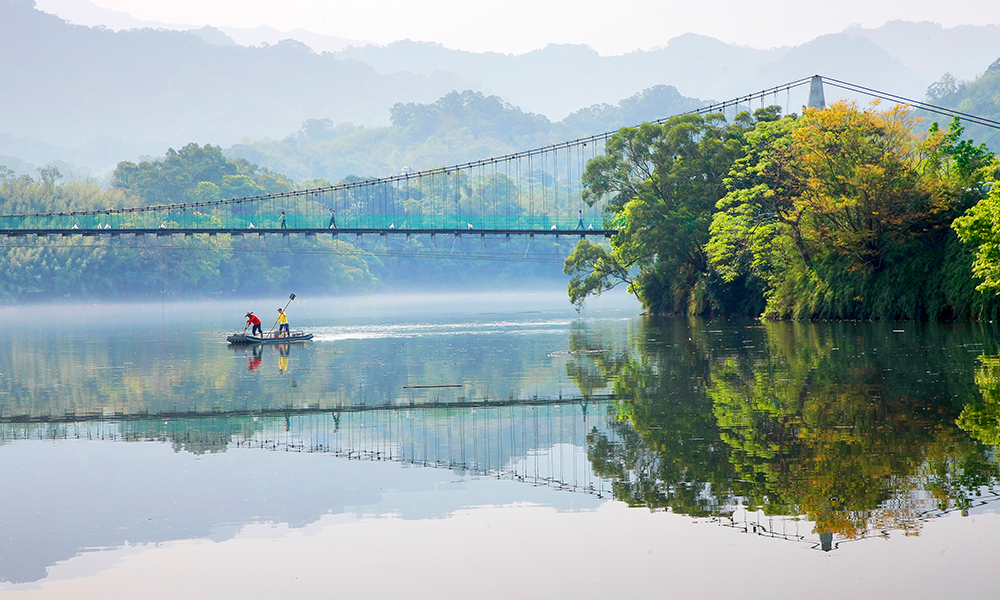
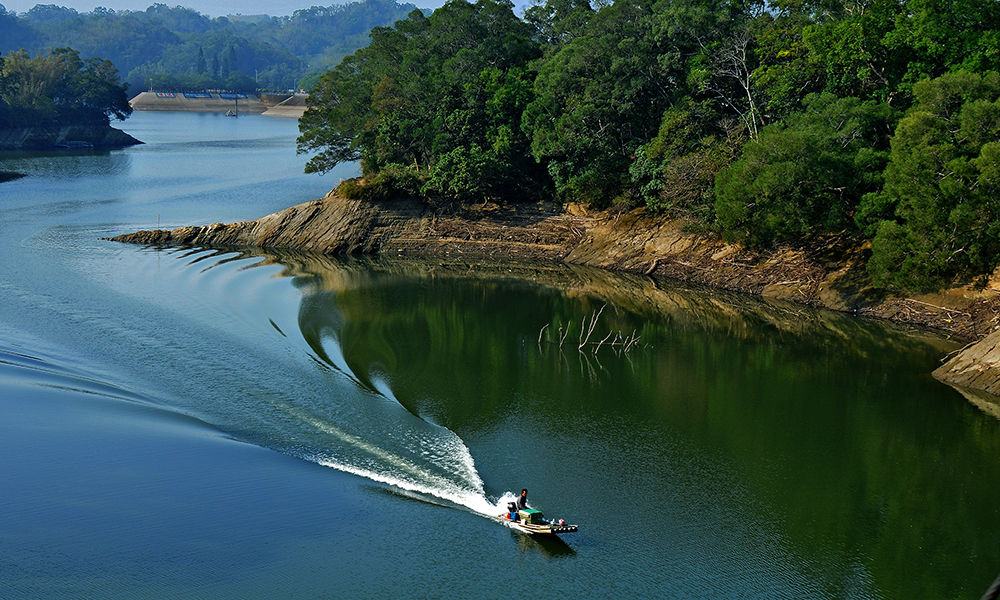
Laotianliao
Mingde Village and Renlong Village are bordered by Mingde River. Mingde Village is situated on the north side of the river while Renlong Village is located to the south. There are three versions regarding the name origin of Mingde Village: one is Laofanzihliao, the other is Laotianliao, and the third is Laotengliao. Before the construction of Mingde Reservoir, this vast and fertile land brought prosperity to residents. However, after the reservoir was built, most of the land was submerged, making it difficult for residents to make a living. Many people left the village, resulting in a decrease in the number of residents.
In 1978, the government carried out administrative regional adjustment, abolished the administrative area of Renlong Village and merged it into Mingde Village, ending the history of Renlong Village. After the restoration of Taiwan, the government changed the place name and replaced the original “Laotianliao” with the name “Mingde”, which was taken from the local “Mingde Temple”. At the same time, the reservoir was also being renamed “Mingde Reservoir” to pray for safe operation. This series of place name changes reflects local history and culture, adding more stories and value to Mingde Village.
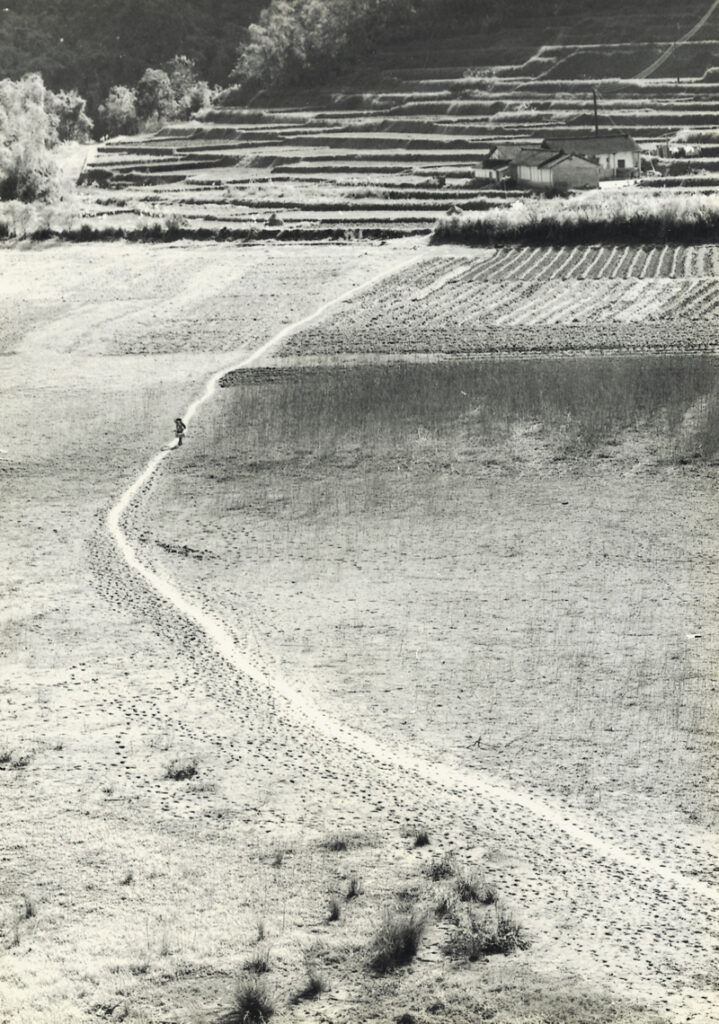
Image source: Village landscape before submerged by Mingde Reservoir. Creator: Xie Qi Jiong. Filing unit: Culture and Tourism Bureau, Miaoli County. Digital object license: CC BY-NC (Attribution – Non-commercial). Published in Taiwan Cultural Memory Bank
Temple Culture
The area around Mingde Reservoir is rich in temple culture, which mainly worships gods such as Guan Sheng Emperor, Three Enzhu (Guan Sheng Emperor, Fuyou Emperor and Siming Zhenjun), as well as Bogung (Tudigong, Lord of the Land). These folk beliefs are closely linked to the expansion and growth of the region. In the early history of Taiwan, the ancestors competed with the indigenous people for land reclamation and were often in dangerous disputes. The strong fighting ability of the indigenous people made reclamation difficult and full of risks. In order to ensure their own safety, the ancestors sought the blessing of Guan Sheng Emperor, who is the “God of Valor”. Especially in the mountainous areas of Miaoli County, the belief in Guan Sheng Emperor is even deeper. Many temples in Touwu Township also tell the same story of the “Appearance” of Guan Sheng Emperor as their genesis.
Furthermore, local residents generally worship Bogung (Tudigong, Lord of the Land). When the land was reclaimed, there were barren lands everywhere with rugged mountains and rivers. The ancestors longed for a god who could dominate daily chores and become the sustenance of their souls. Therefore, Bogung became their most important object of belief. As the ancestors migrated to other places, similar temples were built one after another, helping this belief to continue passing on.
The temple culture around the Mingde Reservoir demonstrates the cohesion of regional history and local beliefs. The worship of these gods not only reflects the spiritual pursuits of the residents, but also shows the hard work and hope in the process of land reclamation and expansion. Moreover, these cultural heritages also serve as an important manifestation of the regional history and value. Through the study of these temples and beliefs, we can gain a deeper understanding of the local cultural background and development trajectory.
Mingde Temple
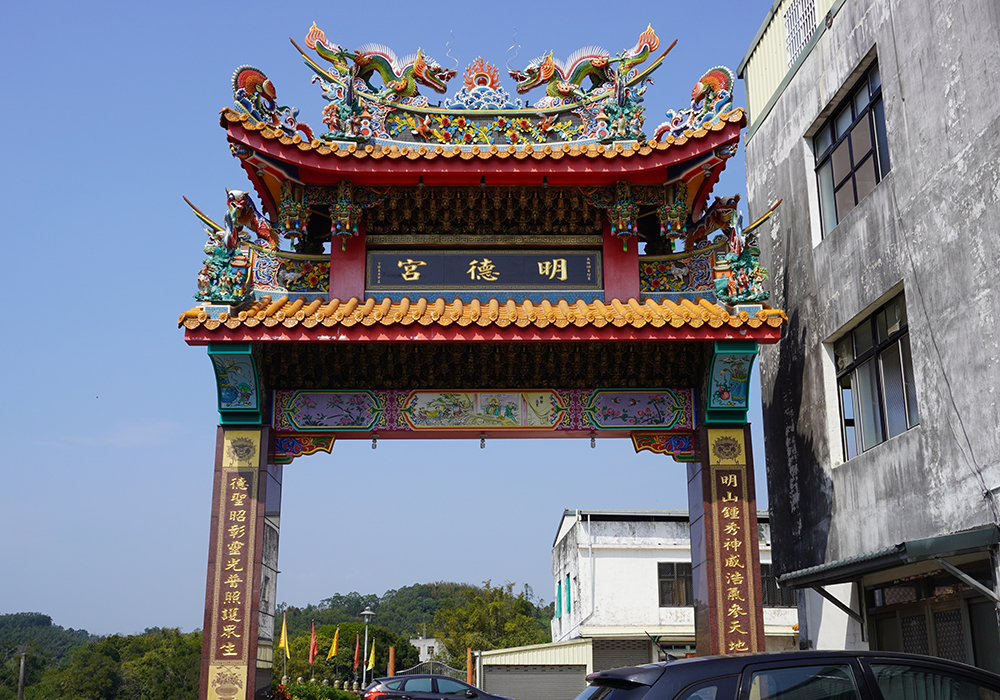
Image source: Temples around Mingde Reservoir. Filing unit: Culture and Tourism Bureau, Miaoli County. Digital object license: CC BY (attribution). Published in Taiwan Cultural Memory Bank
Yongchun Temple
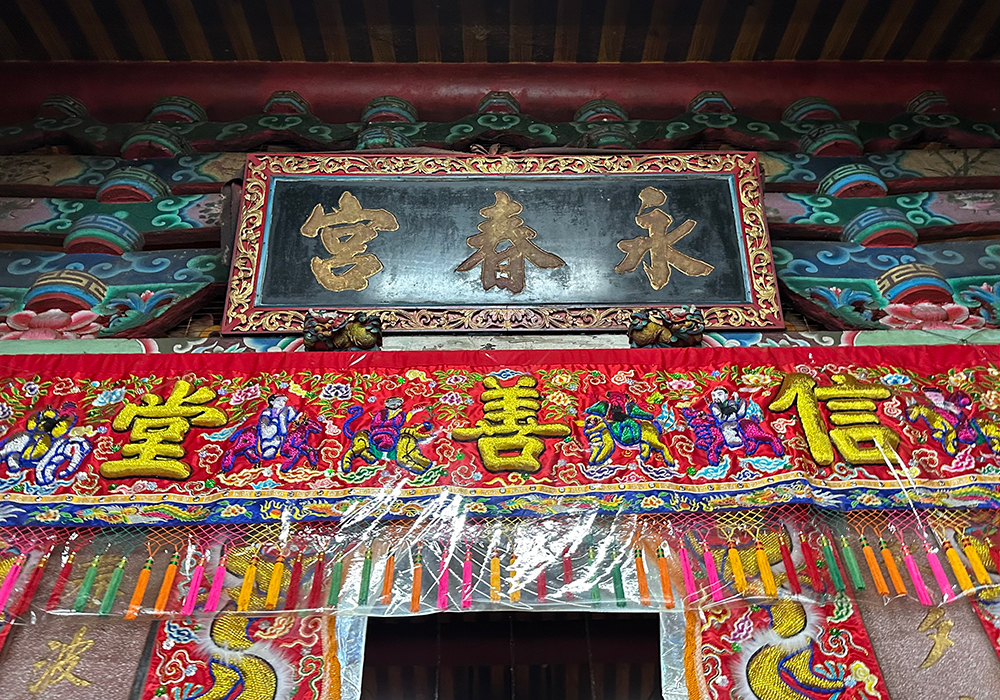
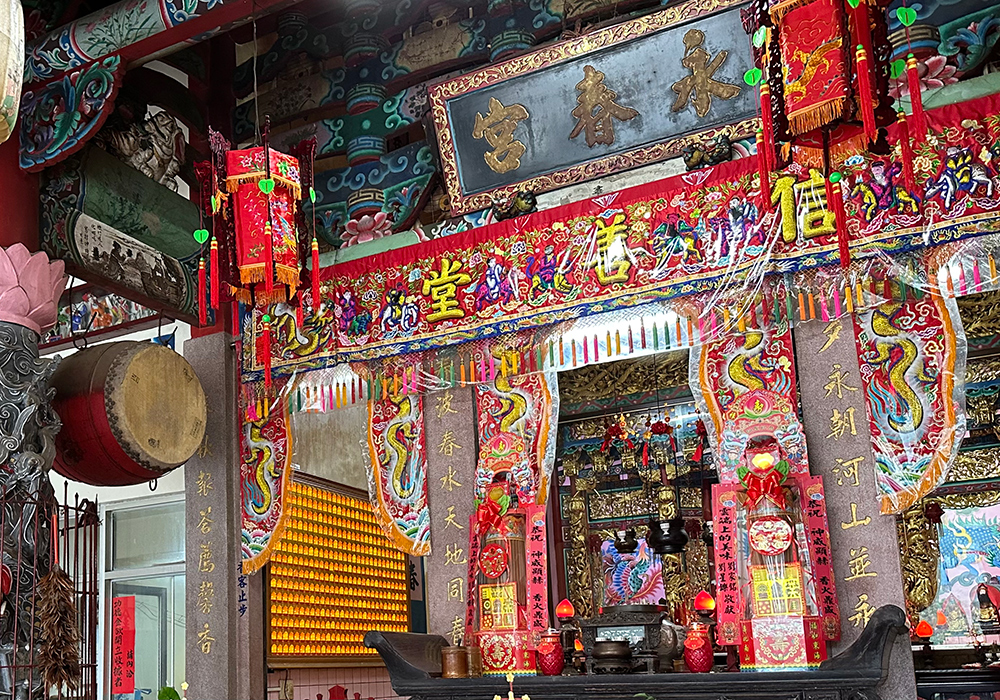
Bogung Temple
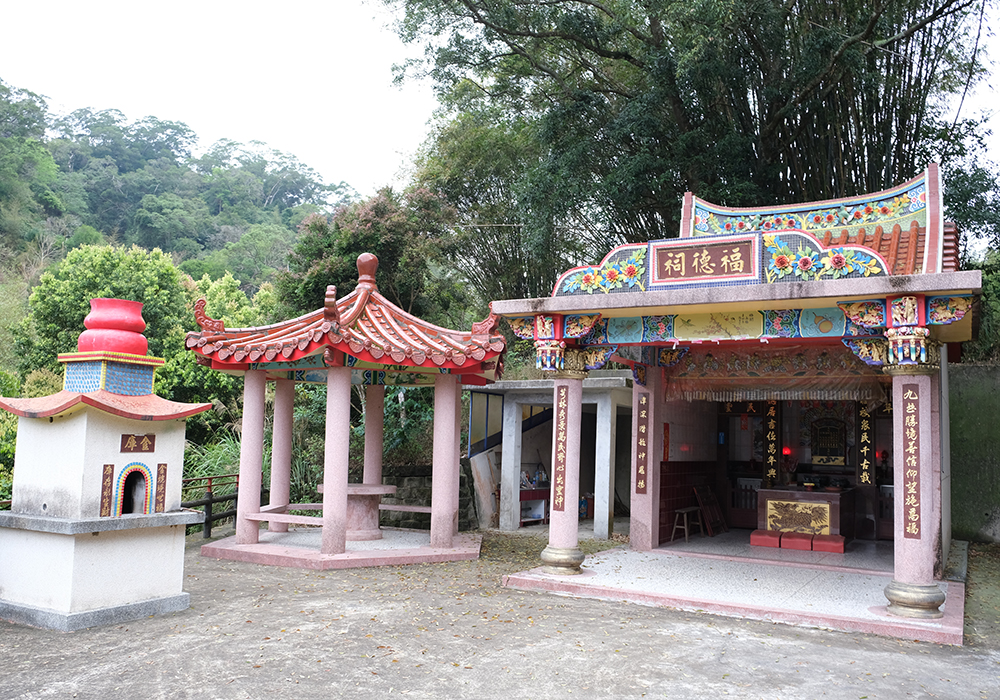
The Kitchen of Huang’s House
The history of the Huang Family’s House can be traced back to the 27th year of the Reign of Emperor Daoguang in the Qing Dynasty (AD 1847). At that time, the ancestors of the Huang family, Yu Gong and Ren Hong Gong, crossed the sea from Guangdong, China to Taiwan. They first settled in Yamuliao, which is near Shalu in Taichung, to carry out land reclamation. Later, some clans of the Huang family moved to the vicinity of Gongguan Stone Wall, Miaoli (now called Stone Wall Village). Afterwards, the ancestor of the 16th generation, Hong Shenggong, came to the Renlong area on the south bank of the Mingde Reservoir with his second wife Jiang. They reclaimed land here and built the Huang Family’s House, bringing blessing to future generations of the Huang family.
The history of the Huang Family’s House has been more than 170 years. Before the construction of the reservoir, the number of households in the House once reached more than 2,100, making it the most populous living place among many such Houses in Renlong Village around Mingde area. However, after the Mingde Reservoir was completed, the water inundated most of the fertile farmlands in front of the House, forcing almost all residents to leave for survival, no one was even seen here at certain times. After several years, some offspring of the Huang family came back to the House and built up an ancestral hall named “Jiangsiatang” to preserve the memory and history of their ancestors.
The Huang Family’s House is a three-section compound that faces north, with the ancestral tablets of the Huang family enshrined in the main hall. Jiangsiatang is also the place for reunion at every festival and New Year. The Huang Family’s House is a witness to history, recording the family’s striving and inheritance and continuing to provide inspiration and lessons for future generations.
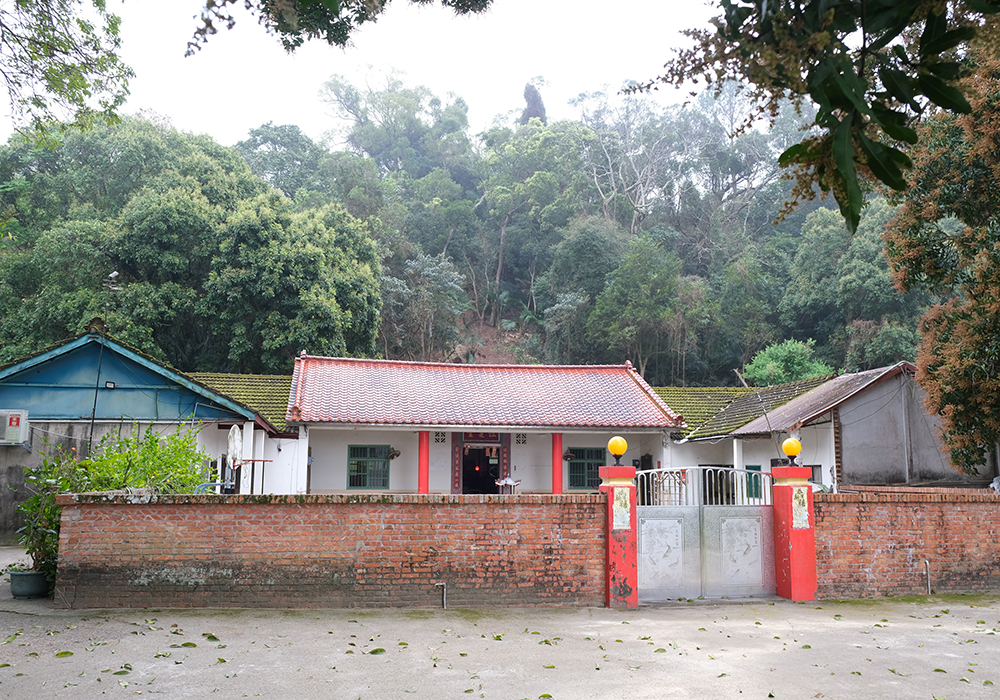
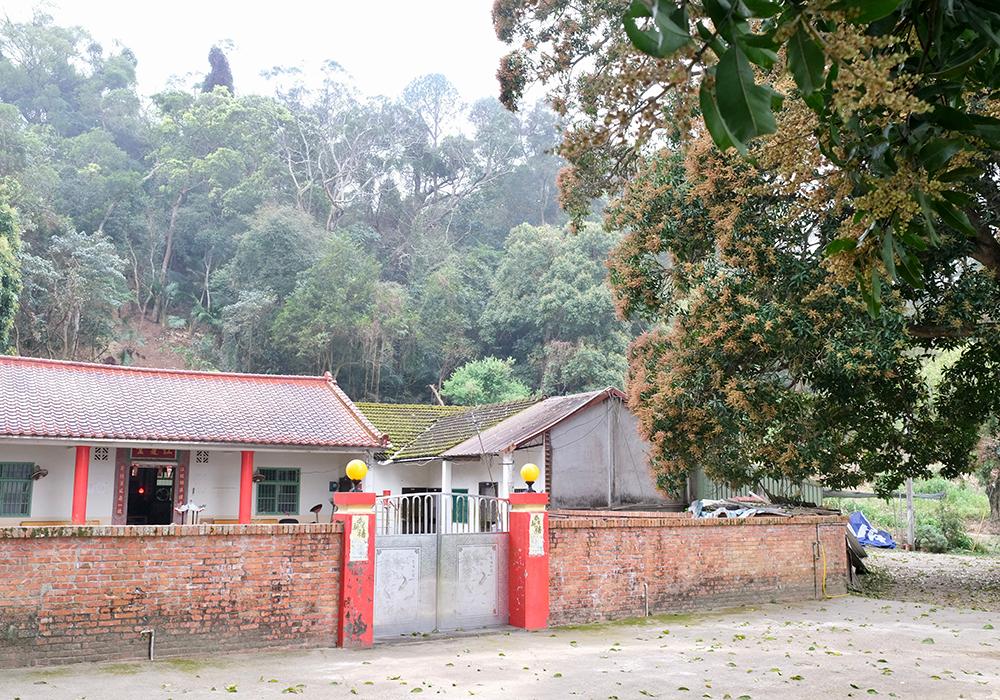
Xiangshan Confucius Temple
The history of the Xiangshan Confucius Temple can be traced back to 1901, when it was founded by seven knowledgeable people including Tang Atong. It was initially a simple thatched hermitage named “Dadongtang” to worship the Three Enzhu and other deities. It was intended to promote the moral doctrine, protect the region, as well as continue the tradition of Chinese studies. During the Japanese rule, it became Guanyin Temple but then was renamed Confucius Temple after Taiwan’s restoration. In 1950, Tang Atong donated the land and began reconstruction. The temple was completed in 1952, continuing to be a religious space that worships Confucianism, Taoism and Buddhism at the same time. Every year on Teachers’ Day, all walks of life in Miaoli County hold a ceremony to worship Confucius to show their respect for education and culture.
The architecture of the Xiangshan Confucius Temple is unique, with a masonry foundation and a wooden carved beam structure on the upper floor, decorated with exquisite carvings of lions, elephants and flowers. The roof reflects the style of a Taoist temple that merges Confucianism, Taoism and Buddhism. It is one of the few Confucius Temple in Taiwan that enshrines the statue of Confucius. In recent years, the Xiangshan Confucius Temple has been committed to passing on and promoting Hakka culture and has become a rare Hakka academy in Taiwan.
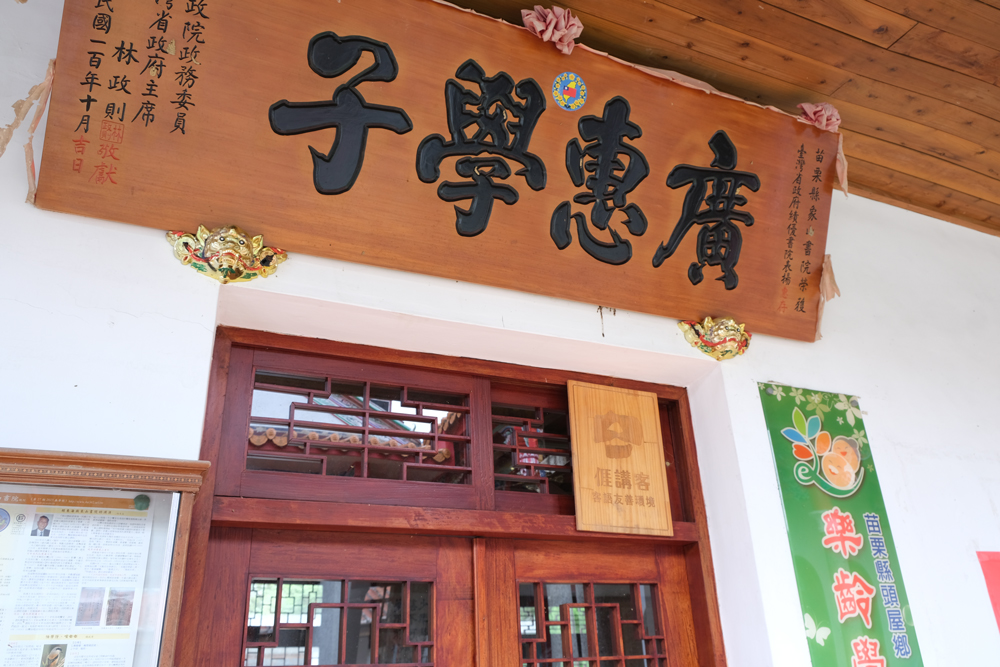
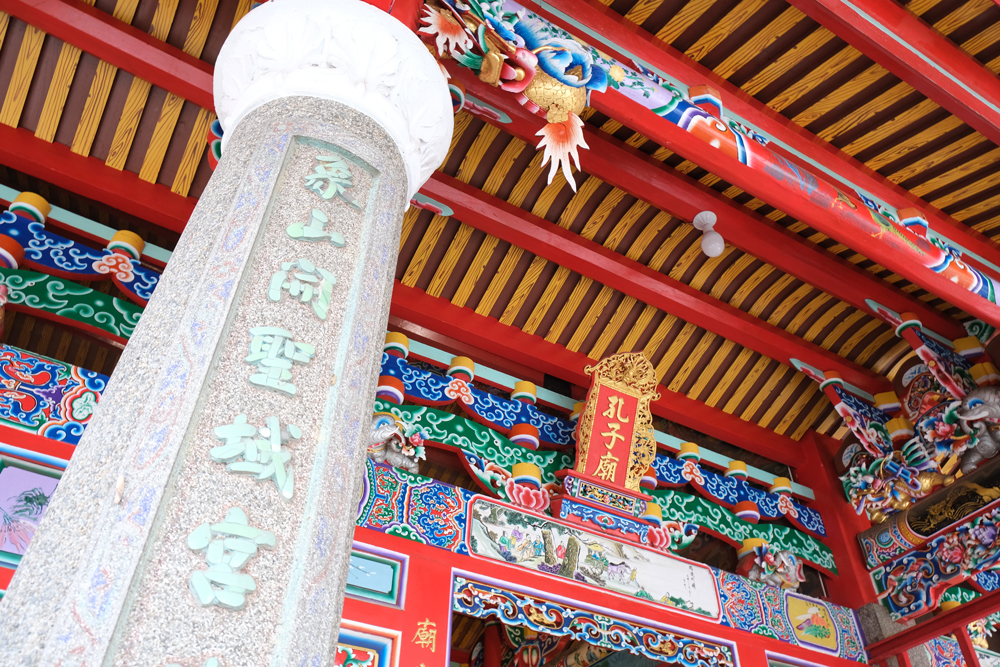
Industrial Development
Mingde Tea
The uniqueness of Touwu Township lies in its superior environment. The hilly and undulating terrain creates ideal soil texture and climatic conditions, which are particularly suitable for the growth of tea. The soil is loose, fertile, well-drained, and rich in organic matter. Here in Touwu Township, sunlight during the day and moisture at night transform into thick fog and abundant rainfall, creating an ideal environment for tea cultivation. Therefore, Touwu Township is known as Miaoli’s “tea town” while its Mingde Tea is the most well-known among all.
In the early days, Mingde Tea was named “Laotianliao Tea”, as it came from places covering the Laotianliao area of Touwu Township and the tea producing areas around the Mingde Reservoir. It was regarded as one of the four major tea areas in Taiwan, equally famous as Mingjian, Dongding and Pinglin. In 1975, the then President of the Executive Yuan, Chiang Ching-kuo tasted the tea from Touwu Township in person and was deeply moved, so he named it “Mingde Scented Tea”. This recognition made “Mingde Tea” more famous and attracted many people from the southern region to experience the unique flavor of Mingde Tea.
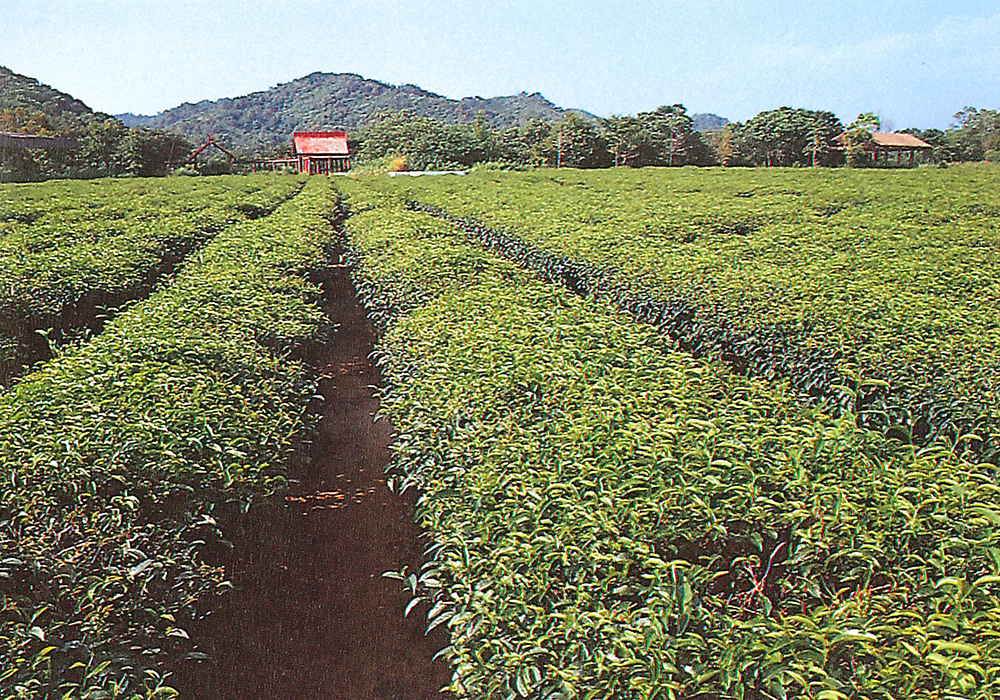
Image source: Agriculture in Houlong River. Filing unit: Culture and Tourism Bureau, Miaoli County. Digital object license: CC BY (attribution). Published in Taiwan Cultural Memory Bank